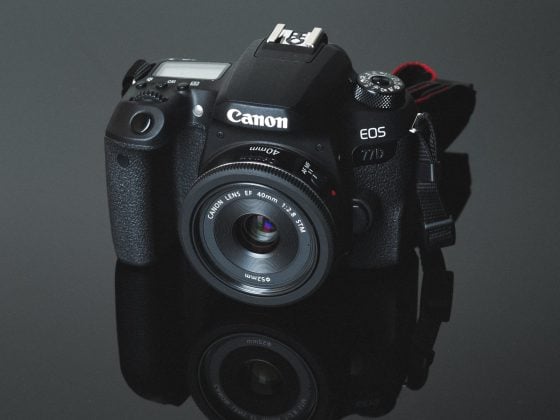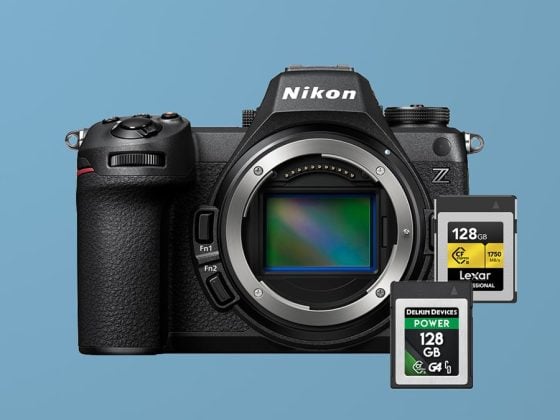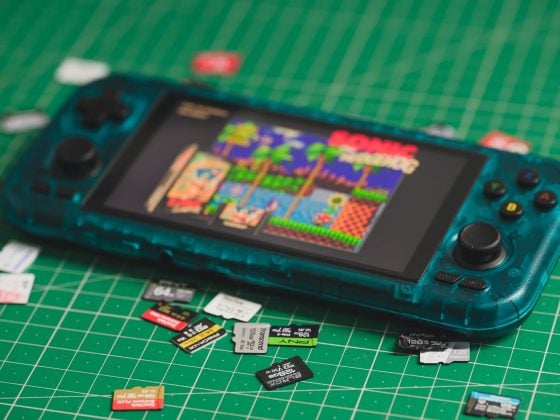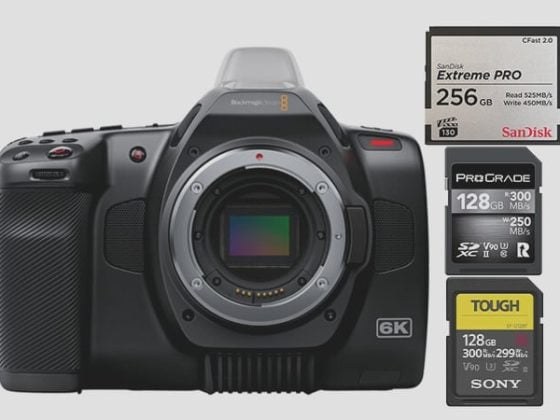We tested all the most popular UHS-I and UHS-II memory cards in-camera to find out how each card performed and which cards were the fastest.
I also share my findings on memory card configurations, possible heat issues as well as video performance.
Use this guide to find the best memory cards for your needs and your budget.
Sony A9 Specs
Sensor: 24.2MP Full-Frame Stacked CMOS Sensor / Processor: BIONZ X Image Processor & Front-End LSI
SD Memory Card Type: Slot 1 – UHS-II / Slot 2 – UHS-I
Video: 4k 30fps
Continuous Burst: 20fps – Electronic Shutter
Est. Size of Buffer: 5GB
Time Taken To Fill Buffer / Uncompressed RAW: – 11 seconds – Lexar 2000x
Uncompressed RAW Shots Till Buffer Fills: 133 – Lexar 2000x / 107 – Samsung EVO UHS-I
Est. Time Taken To Clear Buffer: 31.5 seconds – Lexar 2000x
A List Of Every Lens For The Sony A9
Best Memory Card For The Sony A9
General Performance And The Speed Chart
Sony cameras have always been the lame duck when it came to memory card performance. They were the worst-performing cameras in the industry, except maybe some of the Panasonic and Nikon cameras. Even the Sony A99 II sucks.
Whatever problem Sony was having using cheap hardware with a 32MB/s memory bandwidth, has been solved in this camera and I can now finally say the Sony A9 performs as well as Fujifilm or even Canon with memory card speeds. Maybe even better considering they crammed a 5GB buffer in the thing.
Now, you still don’t get anywhere near Canon 1DX II speeds with its CFast 2.0 cards, but, you probably won’t need it, especially if you’re not shooting uncompressed raw.
If you do shoot uncompressed, you’ll fill up that buffer in about 10 seconds, and it will take about 30 seconds to clear it. So keep that in mind when you’re shooting a lot of burst photography. If you can’t wait on that buffer, you’ll need to switch to compressed RAW.
I’ll get to my thoughts on the overheating issues later in this article.
Sony A9 Memory Card Speed Chart
All USB 3.0 tests done using CrystalDisk – Windows 10, with the Lexar SR2.
| SD Memory Cards | USB 3.0 Read | USB 3.0 Write | Sony A9 Write |
| UHS-II | |||
| Sony G 64GB | 259.2 MB/s | 234.5 MB/s | 146.88 MB/s |
| Lexar 2000x 64GB | 272.7 MB/s | 244.5 MB/s | 146.16 MB/s |
| Delkin 250 64GB | 245.1 MB/s | 164.6 MB/s | 140.19 MB/s |
| Sandisk Extreme Pro 300 64GB | 263.2 MB/s | 233.4 MB/s | 138.34 MB/s |
| Toshiba 64GB | 258.8 MB/s | 226.5 MB/s | 138.19 MB/s |
| Sandisk Extreme Pro 280 64GB | 260.5 MB/s | 214.8 MB/s | 134.02 MB/s |
| Transcend 64GB | 290.2 MB/s | 182.1 MB/s | 131.43 MB/s |
| Sony M 64GB | 253.2 MB/s | 91.62 MB/s | 87.59 MB/s |
| Delkin 1900X 64GB | 273.3 MB/s | 97.3 MB/s | 87.02 MB/s |
| Lexar 1000x 64GB | 147.4 MB/s | 78.4 MB/s | 73.04 MB/s |
| UHS-I | |||
| Kingston U3 64GB | 98.1 MB/s | 90.4 MB/s | 75.17 MB/s |
| Delkin 633x U3 64GB | 98.3 MB/s | 88.7 MB/s | 74.60 MB/s |
| Samsung Pro+ U3 64GB | 97.5 MB/s | 87.3 MB/s | 72.69 MB/s |
| Samsung Pro U1 64GB | 96.3 MB/s | 82.2 MB/s | 70.78 MB/s |
| Samsung Pro U3 64GB | 97.7 MB/s | 78.6 MB/s | 68.83 MB/s |
| Sony 64GB U3 – Old Model | 96.5 MB/s | 84.5 MB/s | 68.02 MB/s |
| Sandisk Extreme Pro U3 64GB | 98.6 MB/s | 90.8 MB/s | 66.32 MB/s |
| Transcend U3 64GB | 96.7 MB/s | 84.9 MB/s | 65.87 MB/s |
| PNY U1 64GB | 96.5 MB/s | 66.5 MB/s | 57.79 MB/s |
| Sandisk Extreme Plus U3 64GB | 99.0 MB/s | 64.4 MB/s | 57.56 MB/s |
| PNY U3 64GB | 96.5 MB/s | 66.1 MB/s | 57.16 MB/s |
| Lexar 633x U3 64GB | 93.3 MB/s | 67.3 MB/s | 56.56 MB/s |
| Sony U3 64GB – New Model | 96.7 MB/s | 56.2 MB/s | 55.11 MB/s |
| Lexar 600x U1 64GB | 95.4 MB/s | 64.8 MB/s | 54.40 MB/s |
| Sandisk Extreme U3 64GB | 72.43 MB/s | 54.1 MB/s | 47.85 MB/s |
| Sandisk Ultra U1 64GB | 99.3 MB/s | 36.1 MB/s | 26.69 MB/s |
| Samsung U1 EVO 64GB | 47.7 MB/s | 27.3 MB/s | 21.18 MB/s |
I tested only 64GB cards, but the 128 and 256 variants should see very similar performance.
Recommended SD Memory Cards For The Sony A9
Fastest UHS-II Memory Cards
UHS-II cards are really what you should buy for this camera. You can still use UHS-I for slot 2, but you’ll want a really good UHS-II card as your primary.
If you want to buy UHS-II cards to be used in slot 2, be careful. Some UHS-II cards (Sandisk Extreme Pro 280) do not perform well in UHS-I slots. If you buy UHS-II cards for both slots, stick with Sandisk Extreme Pro 300, Lexar 2000x, and the Sony 300 cards only.
You’ll also want to buy a fast UHS-II memory card reader.
Sony 64GB 300MB –Amazon / Adorama / B&H
Lexar 2000x UHS-II 64GB – Amazon / Adorama / B&H
Delkin 250 64GB – Amazon / Adorama / B&H
Sandisk Extreme Pro 300 64GB – Amazon / Adorama / BHphoto
Fastest UHS-I Memory Cards
I personally wouldn’t buy UHS-II cards to be used in Slot 2. UHS-I cards perform great in this camera and will be more than fast enough to handle JPEG and 4k video.
Don’t buy Samsung cards for Sony cameras.
Kingston 64GB U3 – Amazon / Adorama / B&H
Delkin 633x 64GB U3 – Amazon / Adorama / B&H
Sandisk Extreme Pro U3 64GB – Amazon / Adorama / B&H
Sony A9 Dual Memory Card Performance
The Sony A9 has two memory card slots, but only one takes the UHS-II cards. That’s the bottom slot, or slot 1.
Personally, I would have loved to see dual UHS-II card slots, (Fujifilm does it) especially in a camera as expensive as this. That way you can buy two smaller UHS-II cards and allow for overflow, instead of putting all your shots on one huge card.
This sort of makes slot 2 almost useless for anything other than JPEG overflow. Shooting RAW+JPEG puts extra stress on the processor and slows down memory card performance. So if you’re shooting RAW+JPEG in a dual memory card configuration and you notice your buffer taking extra long to clear and you camera overheating, this could be the reason.
So there is one other cool use for Slot 2 – Video!
The camera allows you to assign where you want the video to record to independent from where you have your photos going. This means you can shoot your burst UHS-II sequences and shoot some video to UHS-I cards in Slot 2, without having to worry about filling up your UHS-II card in Slot 1.
With Sony’s improved memory card performance, you’ll see more than enough speed out of UHS-I cards to handle any 4k format the camera can produce.
Sony A9 Frequently Asked Questions
Can I use Micro SD Memory Cards in the Sony A9?
I don’t test micro SD memory cards because it’s not that common for people to use them in these cameras. However, they do work and I do use them sometimes when I’m in a pinch. But not without problems.
The problem I’ve had is with the micro SD cards to SD card adapters. Sometimes the micro cards can wiggle around in the adapter and lose connection. This was happening to me with some Delkin adapters, so for that reason, I don’t recommend messing with this system. But again, they do work and they do perform fine as long as you match the brand and model.
What Cards Work Best For Video?
The Sony A9 is capable of shooting 4k video but it does require that you use U3 memory cards. I only had a few issues with some Samsung cards not working even though they were U3, so avoid Samsung!
Besides that, Slot 1 and Slot 2 both shot 4k videos just fine with all the other cards I tested.
The bottom line, you don’t need UHS-II cards for video. UHS-I works fine, but they have to be U3 cards and not Samsung brands.
My Card Isn’t Fast, What’s Wrong?
If you’re having some issues with your memory cards, here is a list of a few things that could be your problem.
- Sometimes cards are just bad. You can usually get them replaced without hassle and many have really good warranties.
- There are a lot of counterfeit cards out there. If you bought of eBay, chances are you got duped. Stick with BHphoto, Adorama, Amazon or other trusted stores.
- Make sure the cards and connection pins are all clean and undamaged.
What Size Memory Card Should I Get, 32GB 64GB, or 128GB?
I use 32GB cards if I’m just shooting photos casually and I rarely fill the cards. If I’m shooting photos with some videos here and there, I’ll need a 64GB card.
If I’m traveling and shooting on a card that I don’t clear for a few days I’ll usually fill up a 32GB card.
I’m not a professional sports photographer but I imagine if you’re shooting sports you’ll need 64GB cards and larger since you’ll be primarily bursting.
It only takes 10 seconds to shoot 5GB of photos when shooting uncompressed RAW, so keep that in mind when you’re trying to decide which size card to get.
| **This website contains affiliate links. We will earn a small commission on purchases made through these links. Some of the links used in these articles will direct you to Amazon. As an Amazon Associate, I earn from qualifying purchases. |






